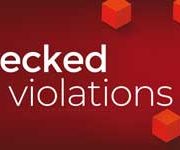Italian journalist faked two attacks, says the judiciary and accuses him of slander
Questo articolo è disponibile anche in:
![]()
According to the Anti-Mafia District Directorate of Naples, Mario De Michele, with the help of another journalists acted in a criminal way for motives still to be clarified. Ossigeno has struck him off the list of threatened journalists
Ossigeno per l’Informazione (Oxygen for Information) learned today, 18th May 2020, from newspaper reports, that the journalist from Campania Mario De Michele, by now former editor of Campania News, has been charged by the judiciary with slander and the illegal carrying of a weapon in a public area. These are serious offences with various aggravating circumstances and allegedly committed in collusion with another journalist, Pasquale Ragozzino, a lawyer from Orta di Atella (Caserta) and former deputy editor for the newspaper directed by De Michele. Both had made formal reports to the police describing themselves as victims of two attacks, carried out by unknown persons with firearms, for reasons still to be clarified. After the first of the ambushes reported in November 2019, De Michele had obtained a police escort.
According to the Anti-Mafia District Directorate of Naples, a judiciary office which on Friday 15th May searched De Michele’s home in Cesa and notified him of a “request to present himself for questioning”, De Michele himself organized the two shootings reported to the police acting in complicity with Pasquale Ragozzino. Both are considered jointly responsible. During the search at De Michele’s home, a regularly licensed pistol was seized.
On seeing the reports in the press, Ossigeno read what was written last night by Mario De Michele on his Facebook profile and on his online newsletter in which he announced he wanted to “step aside due to physical and mental collapse” and expressed regret “to the judiciary, prefecture and police “.
HOW HAS OSSIGENO DEALT WITH THE CASE – In recent months, Ossigeno has spoken several times with Mario De Michele about the attacks he reported and, based on the information he provided and a general assessment of his statements, Ossigeno recorded those episodes as truthful and worthy of the utmost attention. Other organizations, the Italian National Press Federation (Fnsi), the local trade union in Campania (Sugc), the Order of Journalists, the European Federation of Journalists and, most recently, the Council of Europe’s Platform for the Safety of Journalists, have drawn the same conclusions and have supported him. The decision of the Committee for security and public order to assign him a protection service gave an additional stamp of credibility to De Michele’s reconstructions that depicted him as a victim exposed to the risk of being killed. Further credibility came after De Michele took part in a public solidarity initiative in the presence of a government representative.
Today, having heard the news of the serious accusations of the judiciary and having read De Michele’s vague, embarrassed words of apology, Ossigeno above all tried, although unsuccessfully, to get in touch with him and to seek explanations.
REMOVAL FROM THE OSSIGENO LIST – Ossigeno wanted to hear his explanation, his justifications, before publicly announcing the immutable decision to immediately delete his name from the list of threatened journalists compiled by Ossigeno. This decision could be revoked only in the event that, in the subsequent trial, the accusations levelled at him proved unfounded and that adequate and convincing justifications were provided.
Mario De Michele’s lawyer, Mario Griffo, confirmed to Ossigeno that “the investigation is underway” and that his client has “admitted some blame”.
This decision is organic since the list of threatened journalists of Ossigeno cannot contain the names of people whose credibility is questioned, precisely regarding the specific incidents regarding serious and authoritative accusations and without the interested parties having provided elements evidence of one’s good faith.
This list was in fact created to defend all journalists who suffer intimidation and threats. It is a collective defence tool in which all honest and transparent journalists must be able to be recognized as such and which they can use to better and better assert their right to protection, to solidarity, to more effective measures and to be ready to counter threats and intimidation, in order to make fuller use of the journalists’ right to report and the citizens’ right to information.
THE LEVEL OF VERIFICATION – Ossigeno does its utmost to avoid including someone who is not really among the true victims worthy of help and solidarity. The filter adopted is already very severe. Making it even more stringent risks leading to an opposite, no less serious defect, i.e., the exclusion of some who deserve to be helped. Unfortunately in the world – not only among journalists – there are very skilled pretenders who are able to deceive whoever but only for a certain time: until they are exposed. And when this happens, in a sure way or with measures that remove a large part of the credibility of these people and specific incidents, it is necessary to report them clearly, transparently and in a well-documented way as we are doing today, as we do every time it happens. Bear in mind that it happens very rarely: out of over four thousand incidents identified, it has happened fewer than once in every thousand cases we dealt with.
ASP
Raffaella Della Morte collaborated





Leave a Reply
Want to join the discussion?Feel free to contribute!